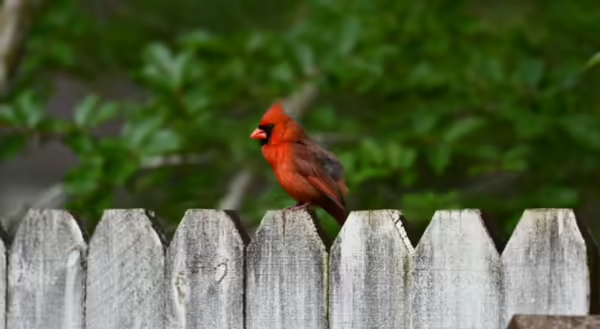
Author’s Note: In January of 2022, I embarked on a year of daily half-hour observations in my backyard. This essay is a partial accounting of what I discovered.
There’s nothing special about my backyard.
It’s one of countless tracts surveyed and mapped into thousands of neat urban parcels in my town. The sloping terrain adds some interest allowing the land to gradually descend to meet the edge of a ravine. Far below, a small stream wanders through the neighborhood until heavy rains turn it into a churning rush of stormwater.
In most seasons, that creek provides a convenient source of water for animals, and its edge is traced with the tracks of critters who prospect its banks. The steep climb from the stream to my yard is tangled with a network of tree roots exposed by runoff. In these craggy spaces, wildlife find shelter, and birds enjoy crooked perches near the water.
My yard resides at the top of the ravine where trees and shrubs frame the rim. An Osage orange and a hickory tell me this place was once a rural landscape. They are kept company by two ancient oaks who anchor the lot and are connected by locusts and walnuts and their kin. Altogether these trees provide a dense canopy appreciated by the furred, the feathered and their food.
Due to the generous shade from the trees, my grass doesn’t grow well, and the leaf litter has collected in an untidy border around the lot. But the animals don’t criticize. They seem to prefer the crumbly sod where they can find a worm or hide a nut, and I am happy to mow less often. If I disturb the decomposing leaves, I uncover a hidden community of snails, slugs and larvae who are nourished and protected by the decay. In all that mess are the eggs of the lightning bugs who will dance on summer nights and the butterflies who will pollinate my flowers.
My backyard is alive with commerce – especially birds. At the feeders, songbirds compete for the best perch causing the seed-filled cylinders to continually sway. Meanwhile, the juveniles, begging for food, flutter their wings causing their own kinetics. Vultures and crows periodically soar overhead, and the resident Cooper’s hawk watches for distracted prey from an inconspicuous branch. At night, a horned owl occasionally calls.
Along with the birds, other animals sometimes stop by. I’m especially fond of the squirrels who have made it their responsibility to guard the yard. When they detect danger - perhaps a prowling cat or a concealed hawk - they broadcast loud, rapid barks that are universally understood as a warning call. The birds explode from the feeders; the chipmunks dive into their tunnels; even my dog comes to attention. Evidently, everyone in my backyard speaks squirrel.
After dark, more visitors arrive. They travel under the cover of the shrubs at the edge of the ravine occasionally poking their noses out for a quick snapshot in front of the trail camera. Likewise, the opossums and raccoons unknowingly submit to the photo surveillance as does the red fox who comes almost nightly. But the uncommon outings by coyotes and deer tell me that even the most wary trust this natural corridor.
Winter is indecisive here, uncertain if it wants to be bright and snowy or overcast and soggy. Only the cold and wind knit it all together. Nonetheless, the industry in my backyard is unfazed. The squirrels still keep watch but now spend more time in the bony treetops visiting and repairing their nests of dried leaves. The birdfeeders remain busy with overwintering guests, mostly nuthatches, chickadees, juncos and woodpeckers with the cardinals providing a welcome flash of color. And when there’s snow, a matrix of tracks and trails confirms the animals remain industrious despite the conditions. Winter may be a time of dormancy, but my yard is unaware of it.
Reflecting now on my year of backyard observations, I confess a certain embarrassment that, until now, many of nature’s daily affairs have escaped my notice. Yet they have unfolded just as they should, following the nudge of the seasons and the assurances of the habitat.
So I’m grateful that I spent some time in my backyard watching what happens there. It’s been a journey of unexpected moments of wonder and calm. And gratitude.
Right outside my door, a little patch of wild has salvaged itself from the city to become a refuge.
It could be anywhere.
ABOUT THE AUTOR: Carla Rich Montez is an Illinois Master Naturalist volunteering as an outdoor writer in the Fulton, Mason, Peoria, and Tazewell Unit. She invites readers to share this story with those who feel nature is beyond their reach.